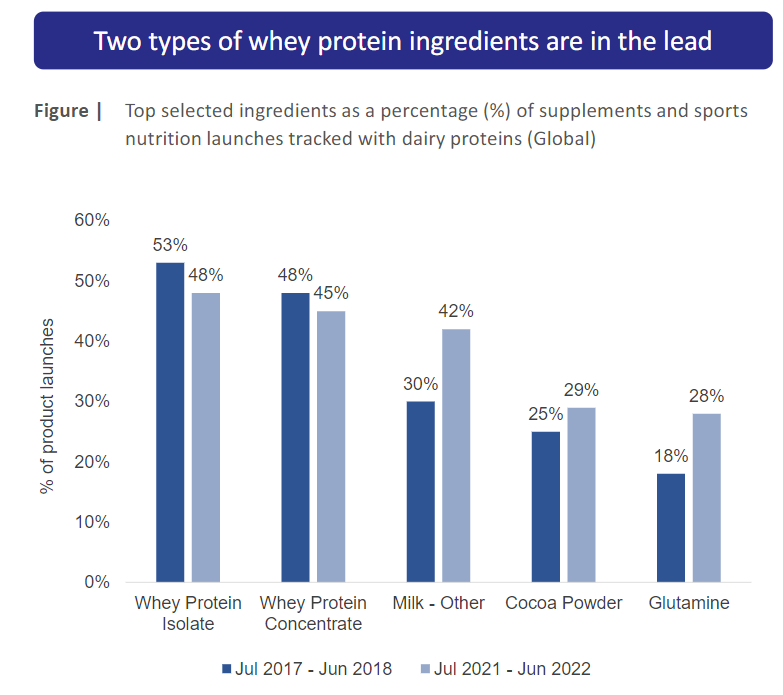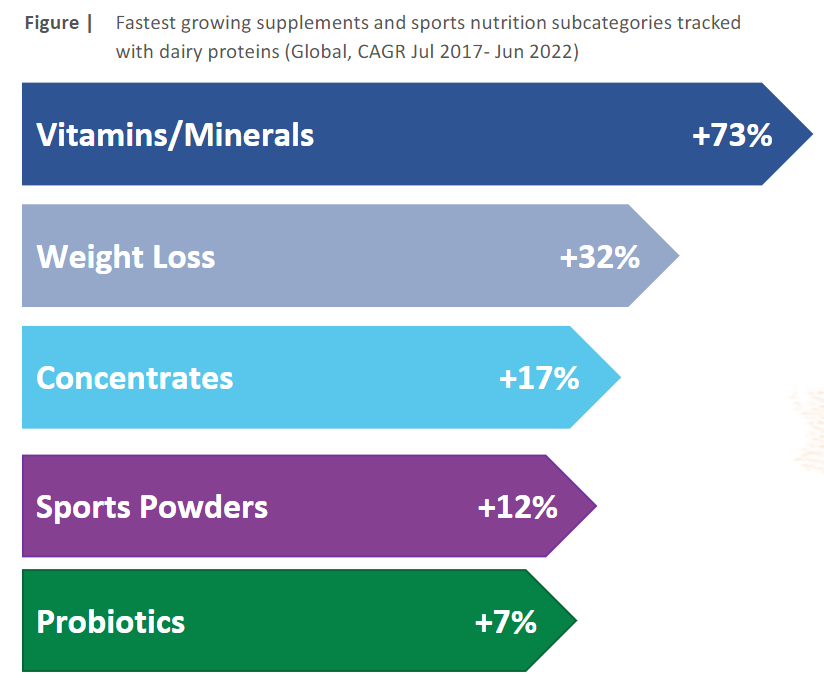Consumers Weigh in on Whey Protein

Whey protein has become one of the most popular and recognized supplements in the nutrition segment because of its reported health and wellness benefits. It’s a staple in the fitness community, but whey protein is not only used by dedicated athletes today.
Casual gym-goers and people looking to improve their health are adding whey protein into their diets.
What is whey protein?
Whey protein is derived from milk during the cheese-making process. It’s one of two main proteins found in milk with the other being casein. Whey proteins are purified ingredients and have varying protein contents.
The two types of whey protein are whey protein concentrate (WPC) and whey protein isolate (WPI). WPC has 34% to 80% protein content, whereas WPI has more than 85% protein content, according to Innova Market Insights’ report Fortified Foods: Whey Protein – The Original Upcycled Ingredient. The report states that whey proteins are one of the most concentrated sources of the amino acid leucine, which is known for promoting muscle protein synthesis.
Globally, WPI and WPC are the top two ingredients in supplements and sports nutrition launches, according to Innova Market Insights’ report Hot Topics: Focus on Dairy Proteins in Sports Nutrition & Supplements. WPI is the top ingredient in 48% of launches and WPC is a close second at 45% of new launches.

Most new product launches with dairy proteins were in sports nutrition. Dairy protein use in vitamins and minerals continues to rise, followed by weight loss, sports powders and probiotics, according to Innova Market Insights.

Animal-Free Whey Protein
A few years ago, animal-free whey protein entered the market. In 2020, Perfect Day debuted the world’s first precision fermentation protein. The first beverage to use Perfect Day’s proteins was betterland foods’ betterland milk in 2022, which is described as creamy, rich and delivering the same cooking, whipping, steaming, frothing and baking functionality, according to Innova Market Insights.
Bored Cow also launched a flavored animal-free dairy milk line, offering chocolate, strawberry and vanilla flavors. The brand offers 8 grams of protein per cup, zero sugars and the calcium, potassium, vitamin D and vitamin B12 that consumers expect with traditional dairy milk.
Consumption and Taste Preferences of Whey Protein
Half of all consumers surveyed by Synergy Flavors reported consuming whey protein at least once a week in the form of whey protein shakes or powder supplements. According to Synergy’s proprietary whey protein research, consumers prefer to consume whey protein at breakfast and are looking for one to five grams of protein per high-protein drink.
Pre- and post-workout protein users, however, are likely to look for 20 grams of protein or more in a high-protein energy drink. Consumers also told us they have no preference over WPI or WPC, but this could be an opportunity to educate them on the benefits of WPI. The benefits include muscle growth and recovery, weight management, convenience and immune system support.
When it comes to taste, 51% of consumers said they want whey protein supplements like shakes or powders to have a medium sweet taste, according to Synergy’s consumer survey. Consumers also told us they want a whey protein supplement with a creamy taste and consistency. The top three favorite whey protein supplement flavors are chocolate, vanilla and strawberry.
How Can Synergy Help?
It should come as no surprise that off-notes like cardboard, chalky or artificial tastes are least appealing to consumers. Functional and healthier products can create unique taste challenges like off notes, but Synergy’s extensive protein and fermentation experience allows us to successfully overcome the taste challenges associated with functional, fortified and plant-based food and beverages.
Contact us to learn more about how Synergy Flavors can help with your whey protein product, whether that’s providing flavor development, taste modulation or consumer insights.
insights
